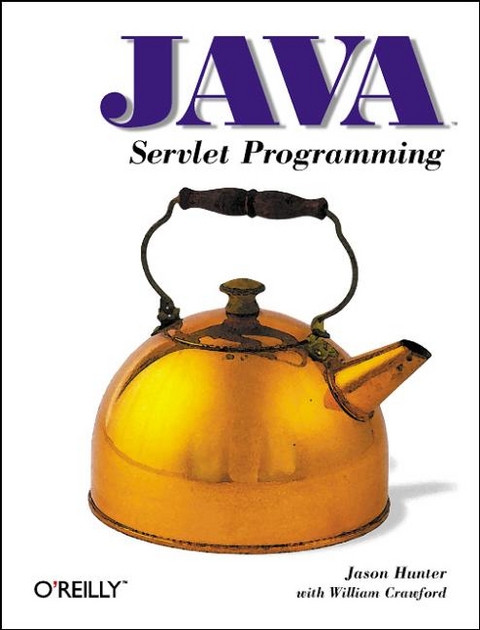
Java Servlet Programming
O'Reilly Media (Verlag)
978-1-56592-391-1 (ISBN)
- Titel erscheint in neuer Auflage
- Artikel merken
A few years ago, the hype surrounding applets put Java on the map as a programming language for the Web. Today, Java servlets stand poised to take Java to the next level as a Web development language. The main reason is that servlets offer a fast, powerful, portable replacement for CGI scripts. The Java Servlet API, introduced as the first standard extension to Java, provides a generic mechanism to extend the functionality of any kind of server. Servlets are most commonly used, however, to extend Web servers, performing tasks traditionally handled by CGI programs. Web servers that can support servlets include: Apache, Netscape's FastTrack and Enterprise Servers, Microsoft's IIS, O'Reilly's WebSite, and JavaSoft's Java Web Server. The beauty of servlets is that they execute within the Web server's process space and they persist between invocations. This gives servlets tremendous performance benefits over CGI programs. Yet because they're written in Java, servlets are far less likely to crash a Web server than a C-based NSAPI or ISAPI extension.
Servlets have full access to the various Java APIs and to third-party component classes, making them ideal for use in communicating with applets, databases, and RMI servers. Plus, servlets are portable between operating systems and between servers -- with servlets you can "write once, serve everywhere." Java Servlet Programming covers everything you need to know to write effective servlets and includes numerous examples that you can use as the basis for your own servlets. The book explains the servlet life cycle, showing how you can use servlets to maintain state information effortlessly. It also describes how to serve dynamic Web content, including both HTML pages and multimedia data. Finally, it explores more advanced topics like integrated session tracking, efficient database connectivity using JDBC, applet-servlet communication, inter-servlet communication, and internationalization.
Jason Hunter is a Java consultant, speaker, instructor, and author. Jason graduated summa cum laude from Willamette University (Salem, Oregon) in 1995 with a degree in computer science. After graduation, he worked at Silicon Graphics in Mountain View, California, for several years, where he was responsible for developing (and breaking) all sorts of Web technologies. He currently works as the Chief Technology Officer of a Silicon Valley start-up, K&A Software, where he specializes in Java training and consulting, with an emphasis on servlets. Jason also writes columns for JavaWorld. Jason began programming in Java in the summer of 1995 and has concentrated on servlets and related server-extension technologies since December 1996. If by some miracle you don't find him at work, he's probably out hiking in the mountains. William "Will" Crawford got involved with Web development back in 1995. He has worked at the Children's Hospital Informatics Program in Boston, where he helped develop the first Web-based electronic medical record system and was involved in some of the first uses of Java at the enterprise level. He has consulted on intranet development projects for, among others, Children's Hospital, Massachusetts General Hospital, Brigham and Women's Hospital, the Boston Anesthesia Education Foundation, and Harvard Medical Center. Will currently heads the product development team at Invantage, Inc., a Cambridge, Massachusetts, startup developing Java-based intranet tools for the pharmaceutical industry. In his spare time, he is an avid amateur photographer, writer, and pursuer of a bachelor's degree in economics at Yale University.
| Erscheint lt. Verlag | 8.12.1998 |
|---|---|
| Reihe/Serie | Java S. |
| Zusatzinfo | illustrations |
| Verlagsort | Sebastopol |
| Sprache | englisch |
| Maße | 180 x 235 mm |
| Gewicht | 850 g |
| Einbandart | kartoniert |
| Themenwelt | Informatik ► Programmiersprachen / -werkzeuge ► Java |
| Mathematik / Informatik ► Informatik ► Web / Internet | |
| ISBN-10 | 1-56592-391-X / 156592391X |
| ISBN-13 | 978-1-56592-391-1 / 9781565923911 |
| Zustand | Neuware |
| Haben Sie eine Frage zum Produkt? |
aus dem Bereich



